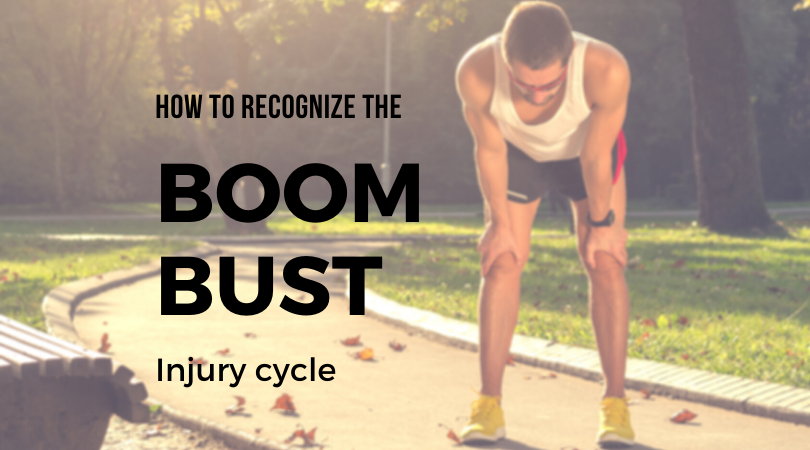How to recognize the boom bust injury cycle

The boom bust cycle is a repeating pattern of managing injuries for a period of time & once recovered, training too hard until another injury is created. From my experience, this pattern is consistent with certain personality traits and training philosophies. Additionally, big survey-style questionnaires show that the reason why runners run is diverse. So this blog is designed an opportunity to self-reflect & hopefully you can identify some unhelpful traits.
What are your training beliefs
Be honest with yourself. Are you someone who overvalues high intensity training with the ‘Go hard or go home’ mentality? Or, perhaps you undervalue low intensity with a ‘Rest is rust’ attitude. These beliefs can serve a purpose in the right circumstances but can be detrimental in your overall training program. Both high intensity and low intensity serve a purpose under the correct dosages so make sure you are getting the balance that is right for you. As a general rule, training with 80% of your weekly mileage at low intensity is recommended.
What are your injury beliefs?
What are you telling yourself about the cause of your injury? The most common reasons I hear are ‘I need to stretch more’, ‘I don’t warm up’ and ‘I have flat feet’. Instead, follow what the science says. Up to 80% of running injuries are due to errors in load management and convincing yourself of other fallacies may create counterproductive illusions. I recommend self-reflecting on your past 1-2 weeks of training load when symptoms first arise to pick up any spikes in your training. Additionally, making adjustments to future training sessions to avoid the same mistakes.
Unnecessary external pressures
Perhaps you enter races without adequate training time. Or maybe you are pressured by overzealous running coaches and sporting clubs? Are you frequently comparing your abilities to friends? I think this point is obvious, but runners can be blind to such traps if they don’t take a step back and self-reflect.
In conclusion, write down your future training plans and analyse your past running trends. As a result, it will make you a more resilient runner and reduce your risk of injury.
Relevant Blog posts:
- Am I strong enough to run?
- How To Decipher Good Pain & Bad Pain
- Detecting early warning signs running injuries
- The top 5 MUST HAVES in your training program
